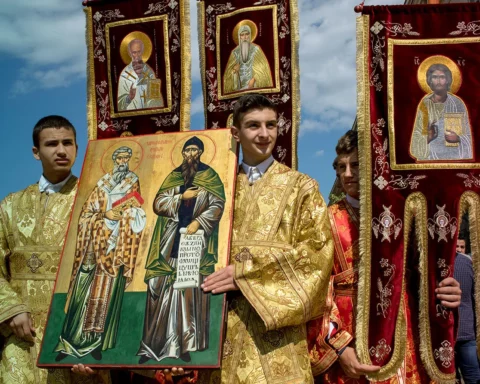If you really like Christmas, the place to be is Central Europe, where you can celebrate it twice. By heading just a bit further east, round two starts just 13 days later. The reason is easy to point out but a bit more complicated to explain. Bear with us – we’ll try.
The Caesar who put ‘Julius’ in ‘Julian Calendar’
The simple explanation is that the Eastern Orthodox Christian tradition, widely popular in Romania and Bulgaria, decided not to abandon the Julian calendar, whereas the Western tradition adjusted to the Gregorian calendar after reforms in the late 16th-century. As its name gives away, the Julian calendar was introduced by Julius Caesar just before the beginning of the Christian era – in 46 BC (so, Christian Era begins 45 years after the first Julian New Year). Although state-of-the-art in its day, it was not entirely accurate from the start. Its problem lies in the year length.
As we all know, a year is 365-days long. Except that upon inspection, a year is closer to 365¼ days. Caesar’s advisors knew this and introduced a leap year every four years to compensate. But the problem is, a year is technically 365.24217 days long. This may seem like a teeny-tiny detail, but it adds up to 10.8 minutes every year, which, over – say – four centuries, means three additional days.
Gregorian Calendar: minding the gap
From the perspective of a single lifetime, it’s not noticeable. However, the Julian calendar has surpassed many lifetimes. So many, in fact, that by the 16th century it already needed to compensate for almost two weeks. The time for reform came in 1582 when astronomers had a daily reminder that their calendars were not adjusted to any observable phenomenon. As you would expect, there was a lot of fuss with the adjustment. But the result was… two calendars and some very odd equations to calculate when we should have a leap year.
This is where we are: a 365-day-long year with a leap year every four years. But this time, we know better – a leap year happens when the year number is divisible by four with two caveats: years divisible by a hundred (these years do not add an extra day) – EXCEPT when the year is also divisible by four hundred (these do). We told you… it’s complicated.
As Pope Gregory XIII introduced the reform, the Western church immediately followed, as did all Western countries. It took a while longer for some countries further east – like Romania, Estonia, Yugoslavia, Turkey, and Russia to adapt, some of which didn’t even switch until the 20th century. However, even as Eastern Orthodox countries turned to the Gregorian calendar, their churches usually did not.
In Eastern Orthodox denominations, Easter 2022 (a moveable feast in both religions based on the moon calendar and day of the week) fell on Sunday, 24 April, a week later than in the Western tradition, which was on 17 April. Christmas, which doesn’t depend on those extra factors, will fall even later – on 7 January 2023.







